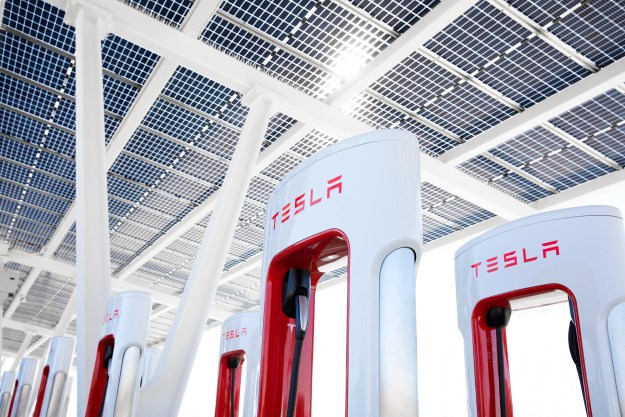It took about a week for Tesla’s Smart Summon feature to summon the federal government’s curiosity. The National Highway Traffic Safety Administration (NHTSA) is investigating several minor fender benders and near-misses that happened while Tesla cars drove themselves autonomously in parking lots.
Part of the V10.0 software update, Smart Summon is a clever piece of technology that lets motorists use their phone and a purpose-designed app to literally summon their car out of a parking spot. The car needs to be within its owner’s line of sight, and the feature doesn’t work if it senses that the phone controlling it is more than 200 feet away; you can’t order your car to leave your garage and pick you up at an airport 30 miles away. The company set these parameters in the name of safety, but videos showing low-speed crashes and near-misses surfaced online shortly after the feature became available.
So, @elonmusk – My first test of Smart Summon didn’t go so well. @Tesla #Tesla #Model3 pic.twitter.com/yC1oBWdq1I
— Roddie Hasan – راضي (@eiddor) September 28, 2019
One video depicts a red Model 3 backing out of a parking spot on the outskirts of Dallas, Texas, moving toward its owner, and nearly cutting off an Acura MDX. Roddie Hasan, the Model 3’s owner, told Reuters the car only stopped because he took his finger off the app’s button. He’s not alone; one Model 3 owner complained his car Summoned itself into a garage wall, and another watched as the Tesla collided with another car backing out of a nearby space.
NHTSA is looking into whether Summon is safe and legal to use. “We’re aware of reports related to Tesla’s Summon feature. We are in ongoing contact with the company and we continue to gather information. Safety is NHTSA’s top priority and the agency will not hesitate to act if it finds evidence of a safety-related defect,” the agency said in a statement sent to Reuters.
While Tesla hasn’t publicly commented on the videos and the reports, it pointed out the owner remains responsible for the car, even if it’s driving itself around a parking lot with no one behind the wheel. Motorists “must monitor it and its surroundings at all times ,” and the car must be “within your line of sight because it may not detect all obstacles. Be especially careful around quick moving people, bicycles, and cars,” the company wrote after releasing the feature.
The bad Summon experiences understandably make headlines, but a majority of the owners who tried it said it worked as advertised. Some had fun with it; one Twitter user posted a video of a Model 3 driving itself with a skeleton behind the wheel. Tesla co-founder and CEO Elon Musk said owners used the feature over half a million times in a matter of days, and announced the feature “will get steadily smoother until it’s like an expert chauffeur who knows you well.”
Editors' Recommendations
- Tesla to begin production on new, more affordable models
- Tesla faces new rival as a tech giant launches its first EV
- New Model 3 ‘takes out the baby fat,’ Tesla designer says in new video
- Tesla offers behind-the-scenes look at Cybertruck bullet test
- How to watch Tesla’s Cybertruck delivery event today




